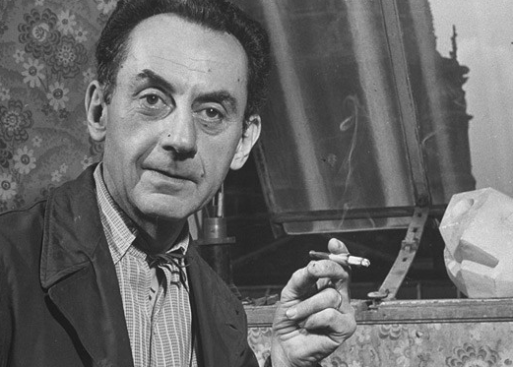Man Ray (1890-1976) was the South Philadelphia-born artist who, after making a break for Europe, became one of the fathers of Dadaism in Paris’s creative hub. Meanwhile, the Italian Amedeo Clemente Modigliani (1884-1920) added to his oeuvre of modern paintings and sculptures proclaimed to be amongst ‘the great[est] [works] of all time–with Giorgione’s ‘Sleeping Venus‘ [and] Titian‘s ‘Venus Awake’” (C.J. Bulliet). Tragically, whatever praise Modigliani received came after his death – his life was filled with the critical disappointment that plagues so many creatives. Amongst the postmortem accolades, one homage to the artist sticks out in particular: Man Ray’s 1929 “Death Mask” of Modigliani.
The work is done in gelatin silver print, one of Man Ray’s trademark mediums. The viewer is presented with Modigliani’s profile: a mouth that doesn’t quite curve to a smile, a kind but downward gazing eye. There’s a unique definition of the artist’s features, which become heightened in phantom-like precision.
“Death masks command our utmost reverence,” says Undying Faces author and death mask expert Ernst Benkard, “for the face is symbolic and perpetuates the final impression of a human spirit whom we once knew, or who had made his mark on all men’s minds.”
“Death masks command our utmost reverence, for the face is symbolic and perpetuates the final impression of a human spirit whom we once knew, or who had made his mark on all men’s minds.”
Man Ray’s “Death Mask” of Modigliani thus becomes a touching acknowledgment of the artist’s life and pursuits. Modigliani had also come to Paris to flourish in its creative community – he even died there – and perhaps Man Ray felt a sense of kinship with him. Both men pushed the limits of what was aesthetically “acceptable,” both strove to “give life” through their work. “An original is a creation motivated by desire,” explained Man Ray, “[and] any reproduction of an original [is] motivated by necessity. It is marvelous that we are the only species that creates gratuitous forms. To create is divine, to reproduce is human.”
“It is marvelous that we are the only species that creates gratuitous forms. To create is divine, to reproduce is human.”
–Man Ray
The ethereal death mask created by Man Ray indeed toys with the find line between life and death, which Cocteau himself described as “a very dangerous boundary.” The creation of a death mask is a hybrid form of replication and “original creation,” a way to indeed “persist the residue of organic substance,” but to see it “far removed from breath and the beating pulse. It is erected as a boundary mark at the parting of the ways of reason and faith, un-likeness and yet the countenance of a man…[admonishing] the gateway between what we call life and death” (Benkard, Undying Faces).
Explore more of SevenPonds’s Soulful Expressions here.

 Man Ray & Modigliani’s Death Mask
Man Ray & Modigliani’s Death Mask





 Our Monthly Tip: Make an “In Case of Death” File to Ease Loved One’s Grief
Our Monthly Tip: Make an “In Case of Death” File to Ease Loved One’s Grief
 Passing of Beloved Comedian Births a New Comedy Festival
Passing of Beloved Comedian Births a New Comedy Festival















